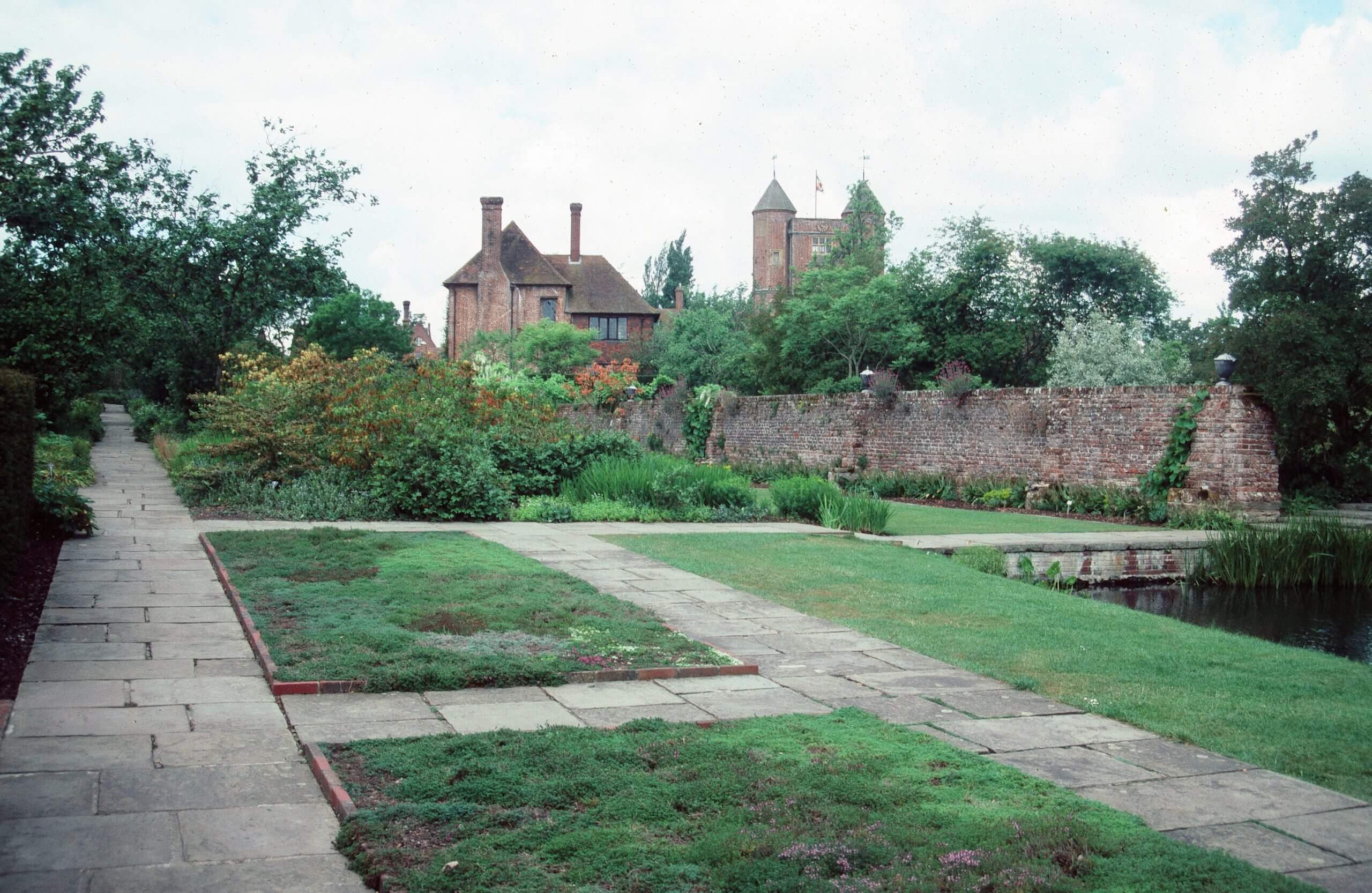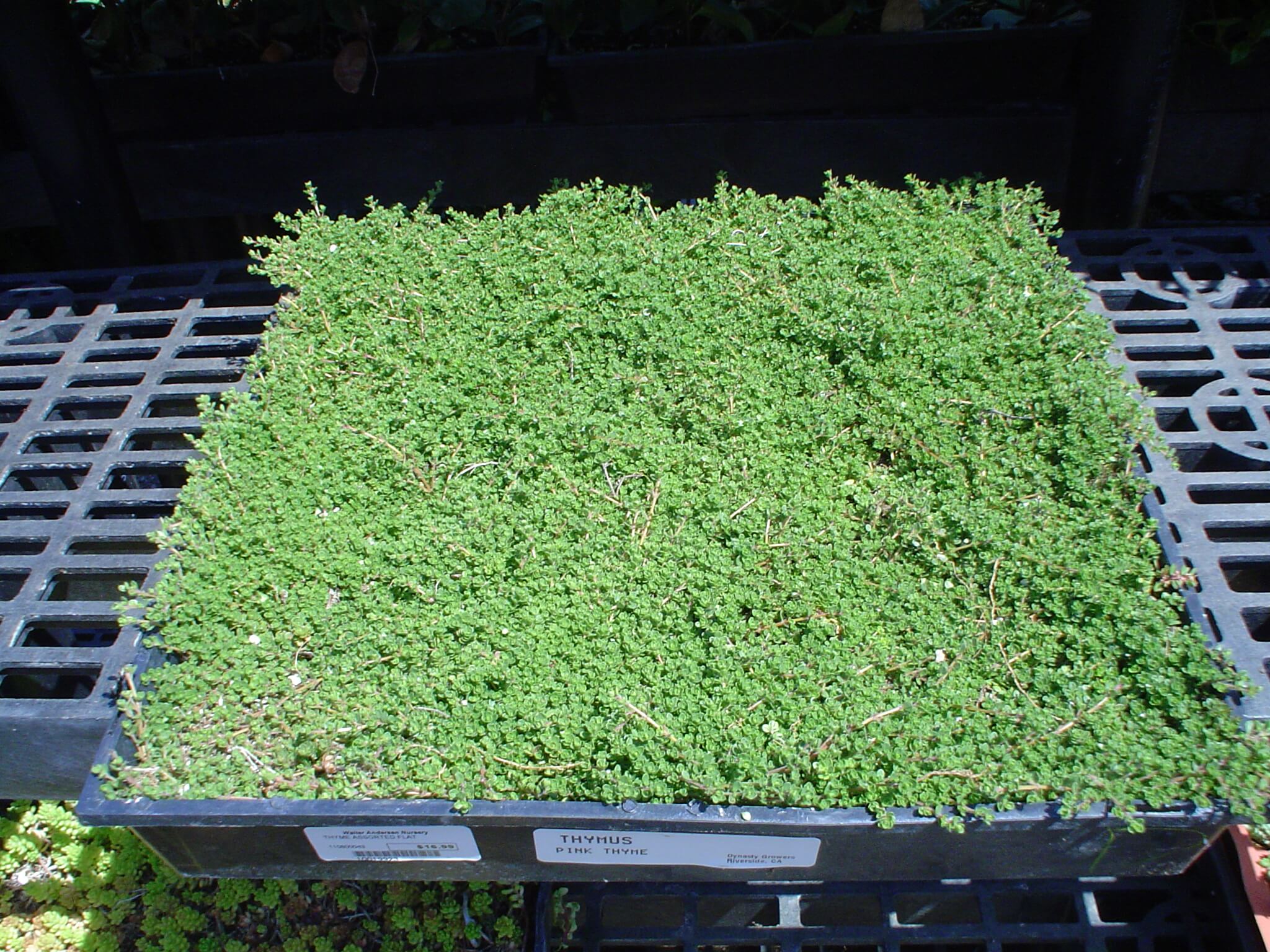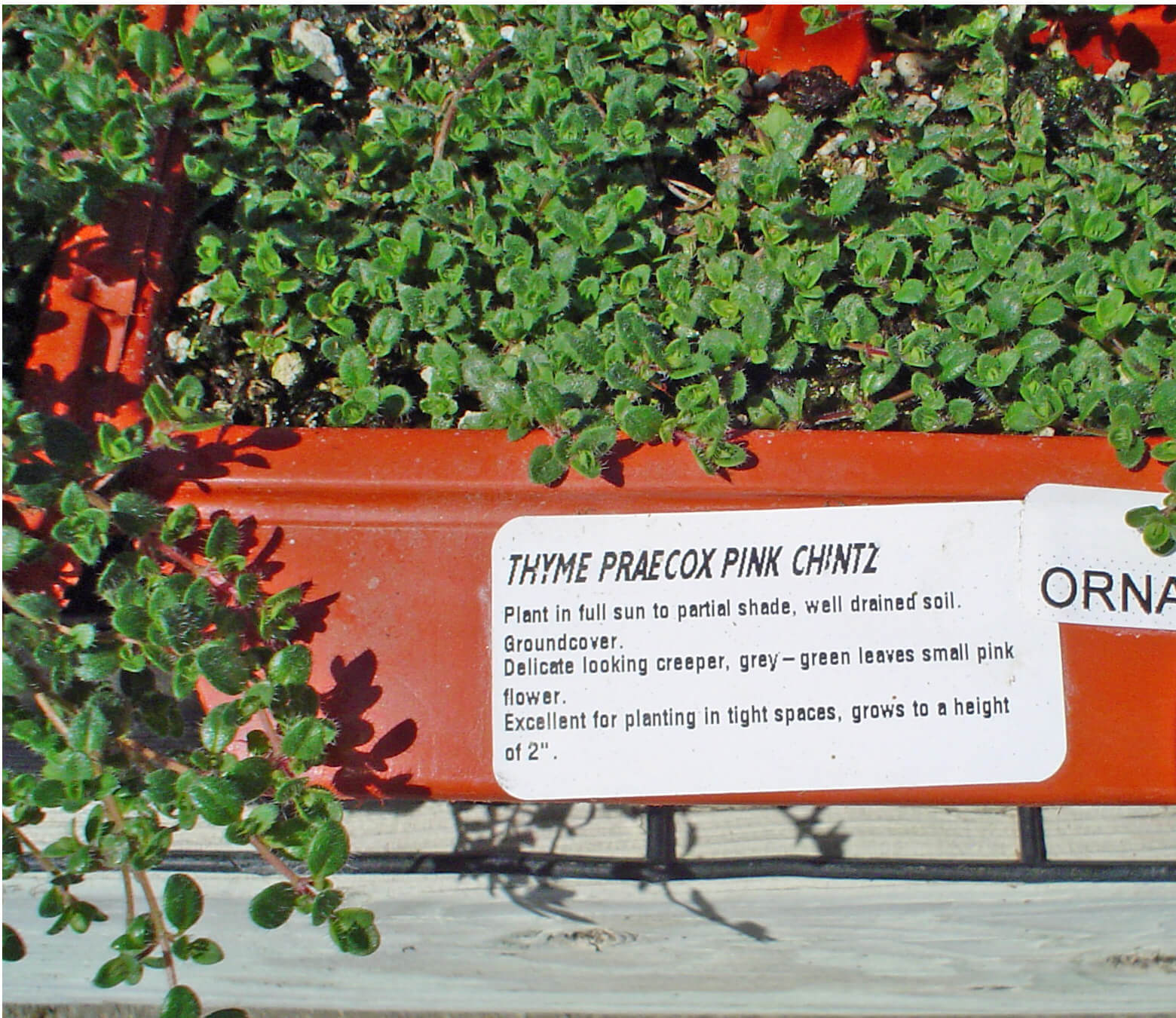
In Queen Elizabeth’s day, everyone had to bathe at least once a year, whether they needed it or not. Clothing was not washed more frequently either. This period, with its voluminous skirts and skintight corsets, made communal living quite odiferous after awhile. The only solution was to cover up the stink with the scent of garden herbs.
Women wore long skirts that trailed over the ground, picking up the scents of every plant they trod upon. This inspired one of the first true lawns, not of grass but of a ground-hugging mat of the culinary herb, thyme (Thymus spp.). The more women walked across it, the more leaves were bruised and crushed, releasing oils to be picked up on slippers, skirts and petticoats. At the end of the day the accumulated fragrance made clothing redolent enough to subdue less pleasant odors.

Famous English gardening author and poet Vita Sackville-West actually recreated medieval thyme lawns at her estate in Kent, Sissinghurst Castle. The small, flat, enclosed lawns are composed of many different colored varieties of creeping thyme. These variations of Thymus praecox and other species offer pink and white blooms, various scent differences and a patchwork of green and gray foliage. Vita also added a medieval planted stone chair in her garden–its seat covered in feathery chamomile. This way women could recline outdoors while their skirts soaked up even more volatile essential plant oils.
The Old English idea of thyme lawns has become more popular as folks look for suitable mat-like plants to fill in the gaps of permeable pavement and flagstones. Rather than a standard ornamental groundcover, creeping thyme can be used along walkways or patios, releasing fragrance every time they are trod upon.
To add thyme to your landscape project, buy it in flats. Single pots of herbs are less substantial and may take longer to become established. Larger pots are more expensive, too. You’ll find flats of creeping thyme varieties grouped with other kinds of groundcovers at the garden center. For more variety, research different forms or varieties and special order flats of the more uncommon ones.

Thyme requires sharp drainage. If you have heavy clay or slow-draining earth, dig out the soil between flagstone and replace with two parts OMRI Listed Black Gold Earthworm Castings to one part washed sand. Use a big garden knife to cut the flat of thyme into segments, just as you’d cut a sheet cake. These “slices of thyme” be shaped to fit perfectly into the gaps between your flagstones. If the stone is thin, excavate until your thyme segments sit just a half inch below the top of the adjacent flagstone.
For a larger thyme lawn, gather flats of different creeping thymes, so you have color and texture variations to work with. Piece them together as you would the fabrics of a quilt for a marbled effect when it fills in.
Walk-on herb gardens are a great way to bring culinary plants into any backyard. They also fill your everyday world with delicious fragrance and seasoning. And if you have a mind to get rid of your grassy lawn altogether, medieval herb gardening may indeed provide the answer.

